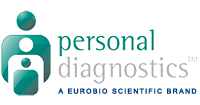
Personal Diagnostics Limited – Important Update
Personal Diagnostics Limited has ceased trading and is no longer selling products.
We would like to sincerely thank all our customers and partners for their support over the years.
Customer Support for previously purchased products will remain available until 31 August 2025.
You can contact us at info@personaldiagnostics.co.uk
You will be automatically redirected to our parent company's page for more information on breast cancer diagnostics.
If you are not redirected, please click here.
**************************************